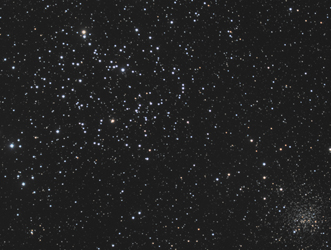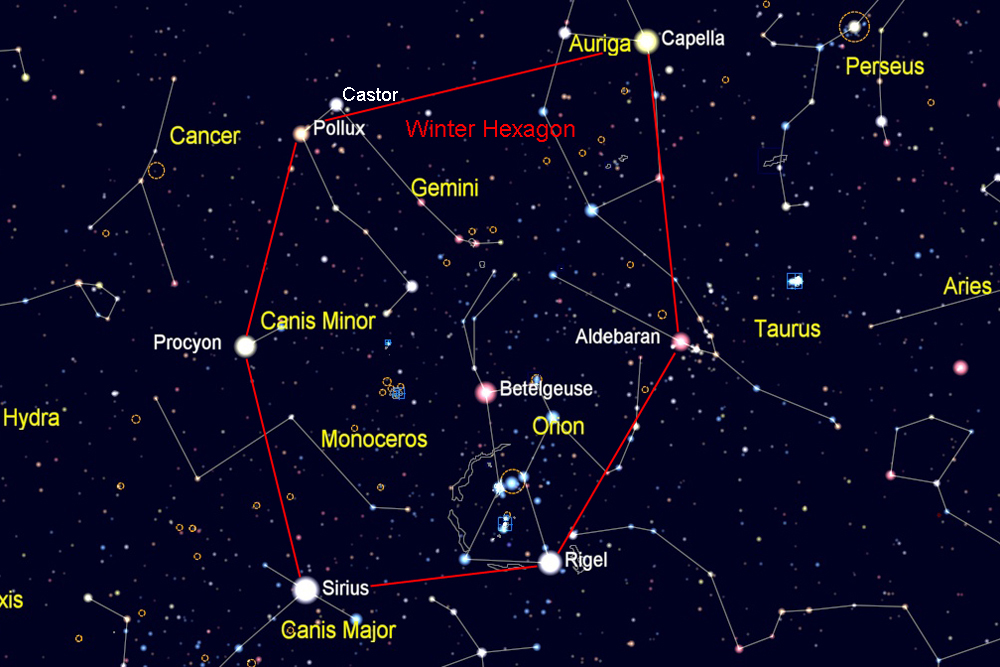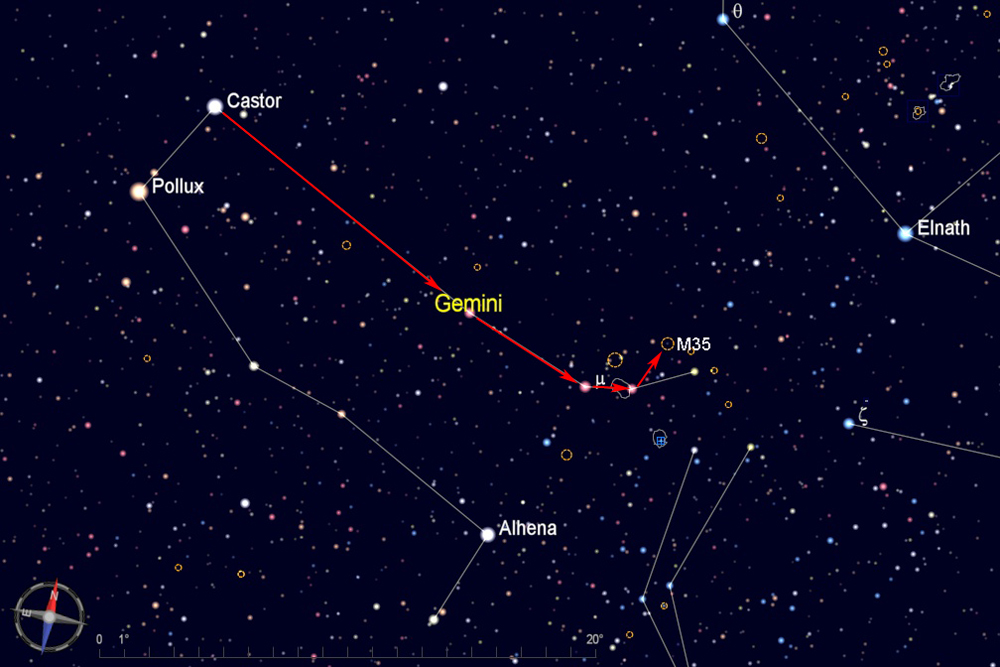
Find the Winter Hexagon, which is composed of six of the brightest stars in the sky--Sirius, Procyon, Pollux, Capella, Aldebaran, and Rigel. On mid-winter evenings, these stars form a large oval stretching from low in the south to nearly overhead. As spring begins, the Winter Hexagon sinks toward the west. The constellation Orion and its bright red star Betelgeuse are inside the Hexagon.
For this star hop, find Pollux in the constellation Gemini and its twin star, Castor, which is just slightly dimmer.

Ancient stargazers visualized Gemini, the twinsas a pair of boys standing side by side, with Pollux and Castor representing their heads. From Castor, follow a line of stars to the foot area of the boy on the west, where you will find two third-magnitude stars. From the second of these stars, Messier 35 is just over 2 degrees to the northwest, as shown below.
